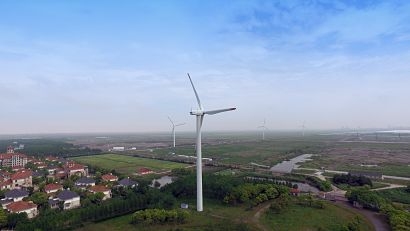
The report “China 2050: A Fully Developed Rich Zero-Carbon Economy” finds that strong policy support, accelerated innovation and expanded investment can enable China to cut its final energy demand while trebling its GDP per capita.
In order to achieve this objective, the investment required can easily be afforded given China’s high savings and investment rate, and the impact on China’s gross domestic product (GDP) per capita in 2050 will be minimal. Committing to achieve zero emissions by 2050 will spur investment and innovation, and it will also deliver large improvements in local air quality and enable China to establish technological leadership across multiple industries.
“For the world to deliver the Paris Climate objectives, it is vital that China has a strategy to achieve net-zero emissions by mid-century”said Adair Turner, Chair of the ETC. “Given China’s central role in the global economy, its vast renewable energy resources, and its technological leadership in key industries, China is uniquely positioned to lead the global energy transition and to decarbonize its economy completely by 2050. This report shows how it is technically and economically possible, and describes the actions which policy makers and companies need to take to seize the opportunity.”
Chen Ji, Principal of RMI, lead for the Chinese secretariat of ETC, added that the report reflects six months of work and covers all sectors of the Chinese economy. It draws upon previous analyses from the ETC and broader literature review. It also integrates feedback from several rounds of consultation with representatives of Chinese companies, academia and institutions as well as global companies and institutions operating in China.
The report demonstrates how China can reduce final energy demand, while living standards continue to rise. Reduced demand for steel and cement, more circular use of all materials - especially plastics - and the inherent energy efficiency advantages achieved by the electrifying of surface transport and building heating will enable China to enjoy a GDP per capita and standard of living of three times the current levels while reducing final energy demand from 88 exajoules (EJ) today to 64 EJ in 2050. Within this projection, the industry sector would experience the most significant reduction (minus 30 percent) but would continue to account for 60 percent of final energy demand in 2050.
China’s total primary energy demand could fall by 45 percent from 132 EJ today to 73 EJ in 2050. This larger fall in primary energy demand than in final energy demand largely reflects the elimination of the energy losses involved in today’s thermal electricity production system. This would also see a dramatic change in the sources of energy, with fossil fuel demand falling over 90 percent, while non-fossil energy would expand by 3.4 times.
At the supply side, to achieve net-zero emissions will require the total decarbonization of electricity generation and the massive expansion of electricity use of around 15,000 terawatt-hours (TWh) in 2050, compared with only 7,000 TWh in 2018. Approximately 75 percent of total electricity generation could be from wind and solar resources with a portfolio of grid flexibility and storage options that help balance supply and demand. It could also require a more than threefold increase in the production and use of hydrogen, from 25 million tonnes to over 80 million tons in 2050. There will also be important but more limited roles for increased bioenergy production and for carbon capture and either storage or use.
The report highlights key sectoral actions to achieve the zero-carbon target as follows:
Accelerate massive increase of renewable electricity generation with capacity improvement on storage, flexibility and demand response.
The use of electrification, hydrogen, carbon capture and storage (CCS) and bioenergy to achieve full decarbonization of heavy industries such as steel, cement and chemicals (ammonia, methanol and high-value chemicals [HVCs]).
Total electrification of surface transport (road and rail services) while supporting a threefold increase in transport use to typical European levels.
The use of biofuels, synthetic fuels, hydrogen or ammonia to drive decarbonization of long-distance international aviation and shipping, combined with the use of battery electric hydrogen and hybrid options over short distances.
A shift toward a more circular economy, with far more efficient use and greater recycling of key materials such as steel, cement, fertilizers and plastics.
The wider deployment of advanced heat pump technologies plus state-of-the-art building insulation to deliver heating and cooling to houses and offices in a zero-carbon fashion, with long-distance industrial waste heat transportation and biomass also playing a role in specific circumstances.
The report also points out that clear targets and forceful public policies are required to achieve the zero-carbon target. Key policy levers to accelerate the transition should include:
Clear policies to support increased investment in zero-carbon electricity system, including generation, transmission, distribution and energy storage systems.
A national carbon price system to drive decarbonization across the whole economy and particularly in heavy industry.
Strong regulations to drive the electrification of surface transport and building heating, and to ensure ever-improving standards of building insulation.
Regulations and incentives to support an increasingly circular economy of materials recycling and reuse, particularly in the plastics sector.
Government procurement to stimulate demand for low-carbon products.
Public support for the development and early deployment of the new technologies required to build a zero-carbon economy.
For additional information:
Rocky Mountain Institute (RMI)
Energy Transitions Commission (ETC)
Report: “China 2050: A Fully Developed Rich Zero-Carbon Economy”

